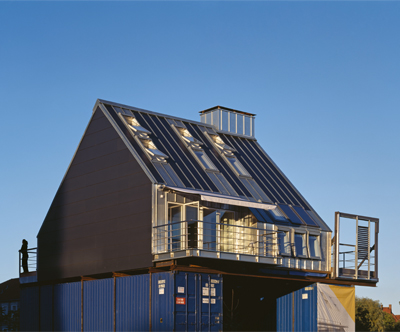
SOLTAG Exterior. SOLTAG Energy Housing, Horsholm, Denmark. Nielsen and Rubow, Cenrgia, Kuben Byfornyelse Danmark, and Velux Danmark.

There’s a mystifying number of terms used to describe green architecture and its components: renewable, sustainable, energy-saving, Energy Star, carbon-neutral, LEED-certified. Perhaps the most powerful term is zero-energy, or net-zero, which describes a building that takes no energy annually from the power grid and has no carbon emissions, so that it doesn’t burden existing systems and pollute. A new book, “Towards Zero-Energy Architecture: New Solar Design” by Mary Guzowski, takes a look at some contemporary buildings that meet this goal without sacrificing style.
Designers and builders can work to achieve zero-energy by installing appliances and heating and cooling systems that use minimal energy, and others that produce their own energy and can even contribute surplus energy back to the grid, like photovoltaic panels, geothermal wells and solar water heaters. But the most powerful strategies, and the ones more likely to shape the character of a building, are ones that incorporate so-called passive means to control light and heat, like site orientation, roof overhangs, operable windows, and shutters. Since heating, cooling and lighting are a building’s greatest energy loads, responding strategically to the sun and its movements is an important step to get to zero-energy.




 Facebook
Facebook Permalink
Permalink Digg
Digg Reddit
Reddit LinkedIn
LinkedIn StumbleUpon
StumbleUpon Tumblr
Tumblr

